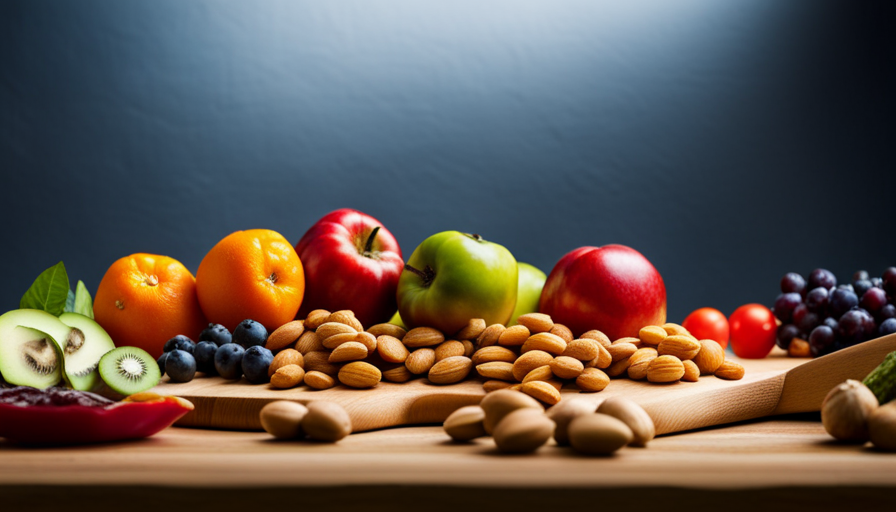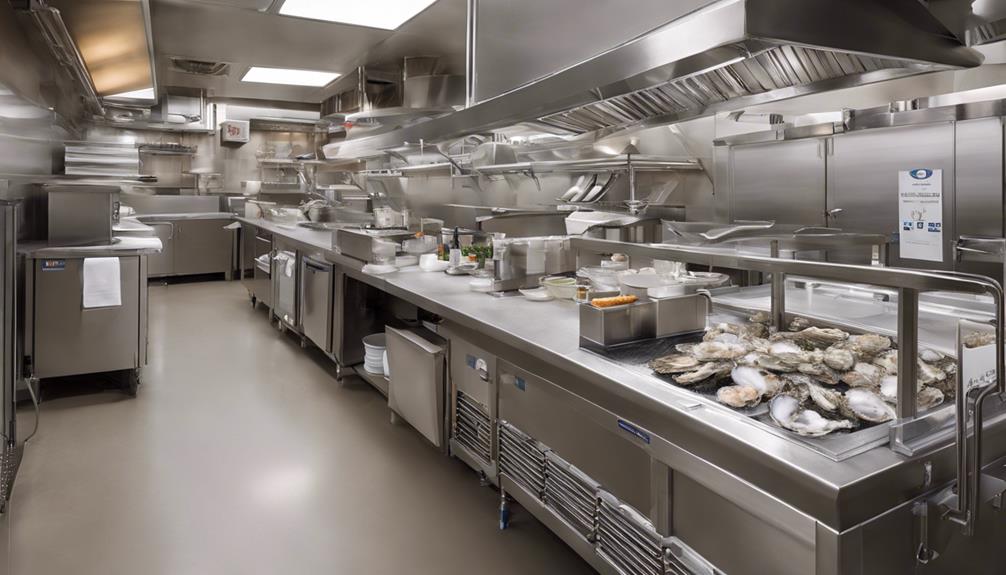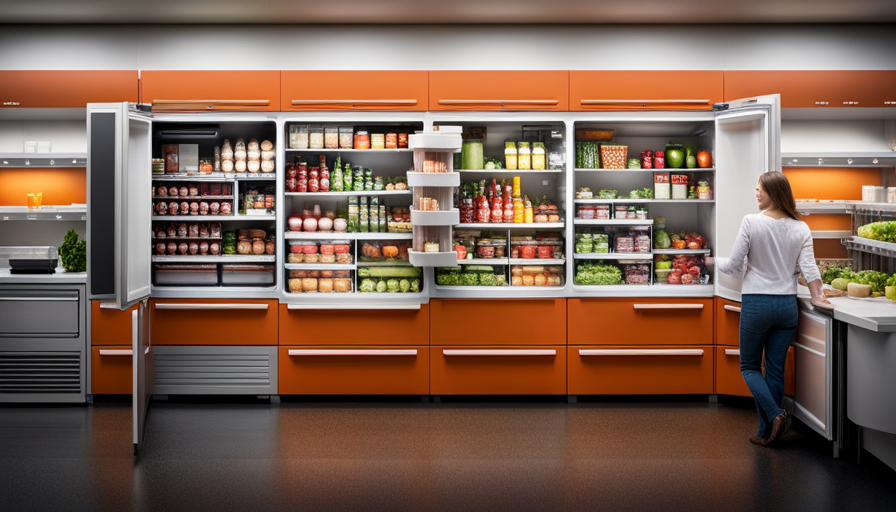Oh, the appeal of raw food! We’re familiar with the claims of enhanced nutrition, higher energy levels, and a radiant, glowing skin. It appears to be the ideal answer to our health concerns. However, before you decide to get rid of your cooking utensils, let’s delve deeper into what Richard Wrangam, esteemed biological anthropologist, has to share about the main issue with raw food.
In a world where the raw food movement has gained momentum, Wrangam’s research forces us to question the very foundation of this dietary trend. He argues that the biggest issue with raw food lies in its limited nutritional accessibility. Contrary to popular belief, our bodies struggle to obtain essential nutrients from raw food alone. It turns out that cooking plays a vital role in unlocking the potential of these nutrients, allowing our bodies to absorb them more efficiently.
Join me as we delve into the science behind Wrangam’s claims, exploring the benefits of cooking, the evolutionary significance of heat, and the risks and limitations of a raw food diet. Together, we’ll uncover the truth and find the right balance for our health.
Key Takeaways
- Limited nutritional accessibility is the biggest problem with raw food according to Richard Wrangam.
- Bodies struggle to obtain essential nutrients from raw food alone.
- Cooking plays a vital role in unlocking the potential of nutrients by increasing their bioavailability.
- Raw food can be difficult to digest due to tough fibers and cellulose, which cooking helps to break down.
Exploring the Nutritional Accessibility of Raw Food
You’re going to love exploring the nutritional accessibility of raw food! Raw food enthusiasts often argue that consuming food in its natural state provides the body with all the necessary nutrients it needs. However, research conducted by Richard Wrangam, a biological anthropologist, points out some potential concerns with this approach.
One major issue is the risk of nutritional deficiencies. While raw fruits and vegetables are rich in vitamins and minerals, they may not provide sufficient amounts of certain nutrients like protein and fat. Additionally, some nutrients, such as lycopene in tomatoes, are better absorbed by the body when cooked.
Another challenge is digestion. Raw food can be difficult to digest due to the presence of tough fibers and cellulose. This can lead to digestive discomfort and limit the body’s ability to extract nutrients effectively. Therefore, it is important to consider these factors when adopting a raw food diet.
Transitioning into the subsequent section about the benefits of cooking in unlocking vital nutrients, it becomes clear that cooking can play a crucial role in enhancing the nutritional value of certain foods.
The Benefits of Cooking in Unlocking Vital Nutrients
Imagine the incredible potential of cooking to unlock vital nutrients, transforming your meals into a powerhouse of nourishment and health. When it comes to exploring nutrient bioavailability, understanding cooking methods is key.
Cooking has been an essential part of human evolution, enabling us to extract more nutrition from our food. Richard Wrangam, a renowned primatologist and evolutionary biologist, highlights the benefits of cooking in his research. He argues that cooking not only makes food more palatable and safe to eat, but also increases the bioavailability of essential nutrients.
By subjecting food to heat, cooking breaks down the tough cell walls of plants and denatures proteins in animal products, making them easier for our bodies to digest and absorb. Furthermore, cooking can enhance the release of beneficial compounds, such as antioxidants, from certain foods. This means that cooking can significantly increase the nutrient content and absorption of our meals.
Understanding the role of heat in nutrient absorption is crucial to maximizing the health benefits of our diets. Transitioning into the subsequent section, let’s delve deeper into the science behind cooking and its impact on nutrient availability.
Understanding the Role of Heat in Nutrient Absorption
Cooking not only enhances the taste and safety of food, but it also maximizes nutrient absorption by breaking down tough cell walls and denaturing proteins. Heat plays a crucial role in nutrient absorption because it helps to release nutrients from the food matrix, making them more available for our bodies to absorb.
For example, heat helps to break down the cellulose in plant cell walls, allowing our digestive enzymes to access the nutrients trapped inside. Additionally, heat denatures proteins, making them easier for our bodies to digest and absorb their amino acids. This is particularly important for plant-based diets, as cooking increases the bioavailability of plant proteins.
Numerous studies have demonstrated the positive impact of cooking on nutrient absorption. One study found that cooking increased the digestibility of protein in legumes by up to 80%. Another study showed that cooking carrots increased the availability of beta-carotene, a precursor to vitamin A, by 600%. These findings highlight the significant role heat plays in unlocking the nutritional potential of our food.
Understanding the role of heat in nutrient absorption is essential for optimizing our diets. By cooking our food, we can ensure that we are maximizing the absorption of essential nutrients, such as vitamins, minerals, and protein. This knowledge can help us make informed decisions about our food choices and cooking methods.
Transitioning to the next section, we will explore the evolutionary significance of cooking in human history.
The Evolutionary Significance of Cooking in Human History
The evolutionary significance of cooking in human history can be seen through the transformative effects it had on our diet and nutritional intake. Cooking played a crucial role in our evolution, providing us with numerous advantages that shaped our physiology and culture. By using fire to cook our food, we were able to obtain more energy from our diet, allowing our brains to grow larger and our bodies to become more efficient. This shift in our nutritional intake had profound evolutionary implications, leading to the development of our unique human characteristics.
Cooking not only increased the caloric content of our food, but it also made it easier to digest and absorb essential nutrients. Heat breaks down tough fibers and denatures proteins, making them more accessible to our digestive enzymes. This improved nutrient absorption provided us with the necessary fuel to support our increased brain size and higher energy demands. Moreover, cooking had cultural significance, as it allowed for the sharing of meals and the formation of social bonds. The process of cooking and sharing food became a central aspect of human culture, fostering cooperation and community.
The evolutionary implications of cooking are undeniable. It revolutionized our diet, enabling the development of our unique human characteristics. Cooking not only increased the caloric content of our food but also made it easier to digest and absorb essential nutrients. Furthermore, it played a significant role in the cultural evolution of our species, fostering cooperation and community. With the understanding of the transformative effects of cooking, we can now delve into the next section and explore the question: "Does raw food provide superior nutrition?"
Debunking Myths: Does Raw Food Provide Superior Nutrition?
Contrary to popular belief, raw food falls short in providing the optimal nutrition our bodies require for optimal functioning and growth. Many people argue that raw food is superior because cooking destroys essential nutrients. However, exploring scientific studies reveals a different story.
Cooking actually increases the bioavailability of nutrients in food. Heat breaks down cell walls and denatures proteins, making them easier for our bodies to digest and absorb. For example, cooking increases the absorption of beta-carotene in carrots by up to 600%. Similarly, cooking tomatoes enhances the release of lycopene, a powerful antioxidant that helps protect against certain cancers.
Furthermore, cooking destroys harmful bacteria and parasites that can be present in raw food, reducing the risk of foodborne illnesses. Salmonella, E. coli, and other pathogens are effectively killed by cooking temperatures. This is especially crucial for individuals with weakened immune systems, such as children, pregnant women, and the elderly.
Analyzing nutrient absorption and the elimination of harmful pathogens, it becomes clear that raw food is not the optimal choice for nutrition. While some nutrients may be lost during the cooking process, the benefits far outweigh the minimal losses.
Transitioning into the next section, it’s important to understand the significance of a balanced diet for optimal health.
The Importance of a Balanced Diet for Optimal Health
To achieve optimal health, it’s essential that you maintain a well-balanced diet that nourishes your body with all the necessary nutrients and vitamins.
A balanced diet is one that includes a variety of foods from different food groups, such as fruits, vegetables, whole grains, lean proteins, and healthy fats. Each of these food groups provides essential nutrients that play a crucial role in supporting our overall health and well-being.
A balanced diet ensures that we get the right amount of macronutrients, such as carbohydrates, proteins, and fats, as well as micronutrients, including vitamins and minerals. These nutrients are involved in various bodily functions, such as energy production, immune system support, and cell growth and repair.
By consuming a balanced diet, we can optimize our body’s functions and reduce the risk of developing chronic diseases, such as heart disease, diabetes, and obesity.
However, simply consuming a variety of foods is not enough to achieve optimal health. It’s also important to consider portion sizes and moderation. Overeating or consuming excessive amounts of unhealthy foods can have negative effects on our health, even if those foods are part of a balanced diet.
In the next section, we will examine the risks and limitations of raw food diets, which can be an unbalanced approach to nutrition if not carefully planned and executed.
Examining the Risks and Limitations of Raw Food Diets
If you think eating only raw fruits and vegetables is the ultimate path to health, you might want to reconsider your approach. While raw food diets have gained popularity, it is important to examine the risks and limitations associated with them. One of the main concerns is the safety aspect of consuming raw foods. Raw fruits and vegetables can be contaminated with harmful bacteria, such as E. coli and Salmonella, which can lead to foodborne illnesses. Cooking food can help kill these bacteria and reduce the risk of infection.
Additionally, raw food diets can potentially lead to nutrient deficiencies. Cooking certain foods can actually increase the bioavailability of nutrients, making them easier for our bodies to absorb. For example, cooking tomatoes enhances the release of lycopene, a powerful antioxidant that has been linked to numerous health benefits. By exclusively consuming raw foods, individuals may miss out on these important nutrients.
To further illustrate the risks and limitations of raw food diets, the following table provides a visual representation of potential safety concerns and nutrient deficiencies:
| Safety Concerns | Potential Deficiencies |
|---|---|
| Foodborne illnesses | Vitamin B12 |
| Contaminated produce | Iron |
| Risk of bacterial infection | Zinc |
| Difficulty digesting raw foods | Omega-3 fatty acids |
While raw food diets may have some benefits, it is important to consider the potential safety concerns and nutrient deficiencies associated with them. Transitioning to the subsequent section about cooking techniques to maximize nutrient retention, it is crucial to explore alternative methods of food preparation that can enhance our overall health and well-being.
Cooking Techniques to Maximize Nutrient Retention
Explore various cooking techniques that can help you retain the maximum amount of nutrients in your food, allowing you to savor delicious and nutritious meals that support your overall health and well-being. Maximizing nutrient absorption is crucial for obtaining the most benefits from the food we consume.
When it comes to cooking methods for nutrient preservation, there are a few key techniques to keep in mind. Firstly, steaming is a great option as it helps to retain the water-soluble vitamins that are easily lost during boiling. By using minimal water and a short cooking time, steaming preserves the nutrients while still cooking the food thoroughly.
Another technique is stir-frying, which involves quickly cooking food in a small amount of oil over high heat. This method not only retains the nutrients, but it also enhances the flavor and texture of the ingredients.
Grilling and roasting are also effective cooking methods for nutrient preservation. These techniques allow the food to cook in its own juices, resulting in a flavorful and nutrient-rich dish. However, it’s important to avoid charring or overcooking the food, as this can lead to the formation of harmful compounds.
By incorporating these cooking techniques into your culinary repertoire, you can create meals that are not only delicious but also packed with essential nutrients. Transitioning to the subsequent section about incorporating raw and cooked foods for a well-rounded diet, we can explore the benefits of combining both types of food preparation.
Incorporating Raw and Cooked Foods for a Well-Rounded Diet
In the previous section, we explored various cooking techniques that can maximize nutrient retention in our food. Now, let’s delve into the idea of incorporating both raw and cooked foods into our diet to ensure a well-rounded approach to nutrition.
Raw foods, such as fruits and vegetables, offer numerous nutritional benefits. They are rich in essential vitamins, minerals, and enzymes that can support our overall health. On the other hand, cooking certain foods can enhance their digestibility and increase the availability of certain nutrients.
To strike the right balance, it can be helpful to create a meal plan that incorporates both raw and cooked foods. This way, we can enjoy the nutritional benefits of raw foods while also reaping the advantages of cooked foods. It’s like having the best of both worlds.
To visualize this concept, consider the following table:
| Raw Foods | Cooked Foods |
|---|---|
| Fresh fruits and vegetables | Steamed broccoli |
| Raw nuts and seeds | Baked salmon |
| Leafy greens | Roasted sweet potatoes |
| Raw sprouts | Grilled chicken breast |
By combining raw and cooked foods in our meals, we can create a diverse and well-balanced diet that nourishes our body.
Now, let’s move on to the next section and explore how we can make informed choices to find the right balance for our health.
Making Informed Choices: Finding the Right Balance for Your Health
To find the right balance for your health, it’s crucial that you make informed choices about incorporating both raw and cooked foods into your diet. There are many nutritional myths surrounding raw food, and it’s important to understand the dangers that can come with consuming it exclusively.
While raw food advocates argue that cooking destroys essential nutrients, renowned primatologist Richard Wrangam points out that cooking actually enhances the nutritional value of certain foods.
One of the main dangers of raw food is the potential for foodborne illnesses. Raw foods, especially meat and eggs, can harbor harmful bacteria such as Salmonella and E. coli. These bacteria can cause serious infections and lead to symptoms like diarrhea, vomiting, and abdominal pain. Cooking these foods thoroughly helps kill these bacteria and reduce the risk of foodborne illnesses.
Furthermore, cooking makes certain nutrients more bioavailable. For example, cooking tomatoes increases the availability of lycopene, a powerful antioxidant that is beneficial for heart health. Cooking also breaks down the cell walls of plants, making it easier for our bodies to absorb nutrients like beta-carotene from carrots and lutein from spinach.
While incorporating raw foods into your diet can provide some benefits, it’s important to be aware of the potential dangers and nutritional myths associated with consuming them exclusively. By making informed choices and finding the right balance between raw and cooked foods, you can optimize your health and ensure a well-rounded diet.
Frequently Asked Questions
What are the nutritional benefits of cooking in unlocking vital nutrients?
Cooking plays a significant role in unlocking vital nutrients and enhancing their bioavailability. When we cook food, it increases nutrient absorption by breaking down tough fibers and cell walls, making the nutrients more accessible to our bodies.
Additionally, cooking activates enzymes that aid in digestion and nutrient absorption. This process ensures that our bodies can efficiently absorb and utilize the essential nutrients present in the food we consume.
How does heat play a role in nutrient absorption?
Heat plays a crucial role in nutrient absorption by breaking down the cell walls of foods and activating enzymes that aid digestion. When food is cooked, it becomes easier for our bodies to access and absorb nutrients, such as vitamins and minerals. The heat also helps to denature proteins, making them more digestible. This process enhances the bioavailability of nutrients and ensures that our bodies receive the maximum nutritional benefits from the food we consume.
What is the evolutionary significance of cooking in human history?
The evolutionary significance of cooking in human history is immense. Cooking allowed early humans to access more nutrients and energy from their food, leading to increased brain size and cognitive abilities. It also provided protection against harmful pathogens and parasites, reducing the risk of disease.
However, there are myths surrounding the health benefits of raw food. Contrary to popular belief, cooking doesn’t necessarily destroy all nutrients, and in fact, enhances the bioavailability of certain nutrients like lycopene and beta-carotene.
Are there any myths surrounding the superior nutrition of raw food?
Raw food nutrition myths have been widely circulated, claiming that raw food is superior in terms of nutritional value. However, it’s important to debunk these myths with evidence-based information. Research shows that cooking actually enhances the availability of nutrients in many foods. Heat breaks down tough fibers, making nutrients more easily absorbed by our bodies.
Additionally, cooking destroys harmful bacteria and parasites that can be present in raw food. Therefore, the idea that raw food is nutritionally superior is simply a myth.
How can one find the right balance between raw and cooked foods for optimal health?
Finding the right balance between raw and cooked foods for optimal health is crucial. Research shows that raw foods are rich in enzymes and nutrients, while cooking can enhance the bioavailability of certain nutrients. However, cooking can also lead to the loss of heat-sensitive nutrients.
It’s important to note that some foods are more nutritious when cooked, such as tomatoes, as it increases their lycopene content. Ultimately, a balanced diet that includes a mix of raw and cooked foods can provide the most benefits for overall health.
Is the Biggest Problem With Raw Food the Risk of Food Poisoning?
While raw food can be nutritionally beneficial, the biggest concern is the potential for food poisoning from raw chicken. Without proper handling and cooking, there is a risk of foodborne illness. It’s important to follow food safety guidelines to reduce the risk of contamination and ensure safe consumption.
Conclusion
In conclusion, after analyzing the views of Richard Wrangam and delving into the nutritional accessibility of raw food, it is evident that cooking plays a crucial role in unlocking vital nutrients. Heat aids in the absorption of nutrients, making cooked food more advantageous from a nutritional standpoint. The evolutionary significance of cooking cannot be disregarded, as it has shaped human history and provided us with the means to thrive.
While raw food may have its benefits, it is important to consider the risks and limitations associated with raw food diets. Finding the right balance between raw and cooked foods is the key to a well-rounded and nourishing diet. So, let us embrace the power of cooking and make informed choices for our health.










